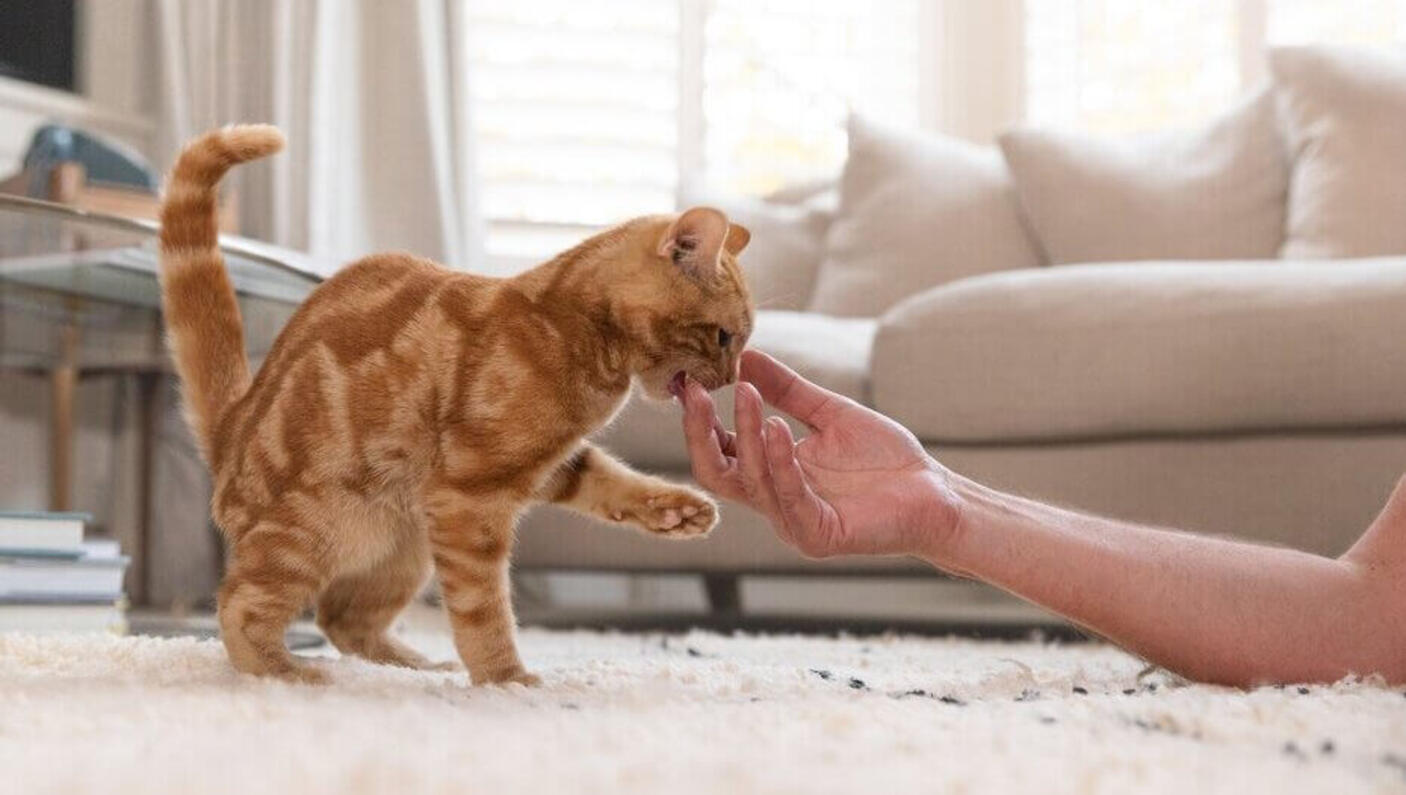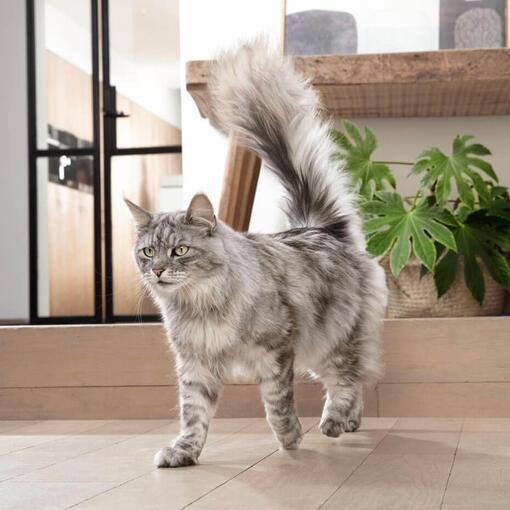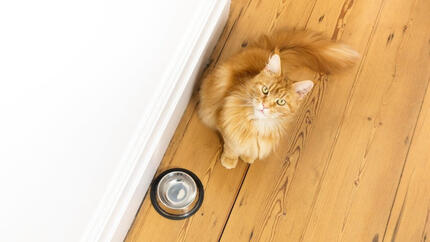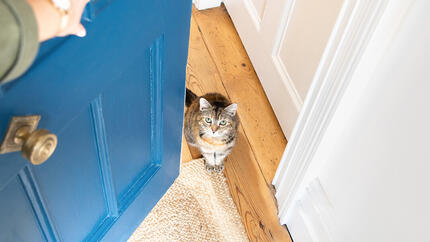


All that cleaning and removing fur you see your cat constantly do, leads to them swallowing a lot of hair, which can collect into balls in their stomachs. Here is what cat hairballs are and how you can help a cat with hairballs.
Cats are very good at keeping themselves clean. They naturally know how to self-groom, and rarely need bathing. However, during the self-grooming process, they can swallow loose hair – and this leads to a cat hairball. Most cats get hairballs from time to time and it’s usually nothing to worry about. But if you are wondering what is causing them, what are the symptoms you should look out for and how to help a cat with hairballs, here is everything you need to know.
What is a cat hairball?
Cat hairballs are a normal by-product of cat grooming. A cat hairball is a collection of dead hair and digestive juices that have formed in your cat’s stomach. Cats develop hairballs by grooming themselves and swallowing the hairs, which build into hairballs in their stomachs.
How do cat hairballs happen?
All cats groom themselves by licking at their fur. Their tongues have little barbs to snag the hairs as they shed. Barbs face backwards on the tongue to help snag loose hairs, but it also means cats have little choice but to swallow the hair they groom, creating a hairball.
Cat hairball symptoms
When a cat is trying to bring up a hairball, they may start retching, gagging or acting like they are dry heaving and trying to vomit. Sometimes the sound they make is called a ‘cough-gag-retch’. This is because your cat can appear to be coughing from the lungs, gagging with their throat and retching from the stomach.
Are cat hairballs normal?
Many cat owners find it very difficult and distressing to hear their cats gagging and retching, and they start to wonder if there is anything they should be worrying about. This self-grooming is completely normal and cats should be doing it to keep their fur in good condition.
Most individual hairs will pass through the cat’s digestive system as normal, but sometimes they can form clumps which begin to accumulate in the stomach. Cats try and vomit them up to prevent them going into the intestine and causing a blockage. Don’t be worried if you see your cat stretch their neck, dry retch (their mouth opening wide) and expel a hairball before calmly walking away. It can be distressing to watch this, but don’t worry – it’s normal.

How often do cats have hairballs?
Some cat owners think that their pet brings up a hairball every day, but this isn’t true. Cats should only get hairballs occasionally, usually less than once a month. Most hairs swallowed from grooming will pass through the digestive system and out into the litter box without a problem.
However, if your cat has hairballs frequently, it’s worth taking them to see a vet. Numerous cat hairballs could be a symptom of a problem in the gastrointestinal tract – in this case, it is best to check this out as soon as possible.
Numerous hairballs in cats can also be a symptom that your cat is over-grooming. Cats tend to over-groom when they are stressed – a bit like us biting our fingernails – and thus will consume more hair, leading to more hairballs. If you think your cat may be stressed, take them to the vet.
Which cats produce more hairballs?
Cat hairballs are part of cats’ instinctive grooming regime and are usually nothing to worry about. Kittens and younger cats usually have fewer hairballs because they are not as fastidious in terms of grooming. Older cats, on the other hand, may have grown fussier and may produce hairballs more often.
Fluffy cats make the perfect companion, but are also predisposed to producing more frequent hairballs. Cats with longer fur, such as Persians and Maine Coons, naturally produce more hairballs as their hair accumulates into a clump faster.
How to help a cat with hairballs
Many cat owners are concerned when a cat has hairballs because it seems like they are choking or struggling. What’s the best way for owners to help a cat throw up a hairball?
Although it’s difficult to watch your cat struggling and gagging, the best thing you can do to help them with hairballs is to give them plenty of space. It’s perfectly normal for your cat to gag several times to be able to vomit the hairball.
The key is not to get too distressed and just keep an eye on your cat to ensure they bring up the hairball and then stop gagging.
Hairball treatment for cats
When your cat has hairballs, it’s common to wonder what treatments are available. There are lots of home remedies online, especially for oils and lubricants. However, we don’t advise trying these.
You can buy a specialist cat hairball treatment paste that contains a laxative and lubricant to help them pass through the digestive system. But this is not generally needed. If you do use it, follow the instructions to the letter.
One particularly effective treatment is hairball cat food. These kibble-based products contain lots of fibre to help take excess fur through the digestive system. They also contain vitamins and minerals to keep your cat’s fur in good condition and reduce hair loss.
Finally, vets can prescribe treatments for hairballs in severe cases.
When can cat hairballs become dangerous?
In and of themselves, hairballs are harmless. However, if your cat is wandering around the house and repeatedly retching with no sign of a hairball (and especially if they’ve lost energy and are unwilling to eat), then take them to the vet immediately. It could be a sign that the hairball has moved from their stomach to their intestine. This is a serious condition that should be addressed by a vet immediately.
You should take your cat to the vets if they have any of these cat hairball symptoms:
- Prolonged gagging, vomiting, retching without producing a hairball
- A drop in appetite
- Lethargy
- Cat constipation or diarrhoea
- Excessive nibbling on grass
- A swollen or sensitive stomach
How do cat hairballs get diagnosed?
There are many ways in which a vet may diagnose cat hairballs. This may an x-ray or a physical examination. In extreme cases, surgery may be needed to remove the hairball if it has grown particularly large; this can be expensive in terms of vet bills.
Constant retching (with no sign of a hairball) and lethargy can also be signs of asthma. The vet should be able to discern the underlying cause. Either way, you will have identified a health issue in your cat and will have solved it before it gets worse.
It’s normal for a cat to bring up occasional hairballs. You should only start to worry if the cat is vomiting up a hairball every few weeks or consistently for more than 48 hours at a time – it’s a sign too much hair is ending up in the gut.
How can you help prevent hairballs in cats?
There is no way to completely stop hairballs forming, but there are a few things you can do to help.
Proper cat grooming can help get rid of the dead and loose hair on their coat. Regular and routine brushing can mean that there is less loose hair for them to swallow when they groom themselves in private. Less consumed hair means fewer hairballs. If your cat is fussy about being brushed by you, take them to a professional groomer.
Keeping your cat’s coat regularly trimmed means that the hair your cat consumes is less likely to become tangled in a hairball and has a greater chance of passing through her system without incident.
Feeding your cat the right balance of nutrients is important in addressing hairball problems. There is now specific cat food for hairballs, such as Purina ONE® Coat and Hairball. Such food is high in fibre, which helps stop hairballs from forming in the stomach. The balance of nutrients in the food also helps support your cat’s coat, reducing shedding and helping it to remain sleek and glossy.
Cat fur is beautiful and that’s partly down to how much time they spend grooming. It’s thought that the average cat spends 4% of their lives grooming themselves! This and more interesting facts about our dear felines await to be discovered in our fun facts about cats article.
Shop food to support your cat:
More articles by Purina One









